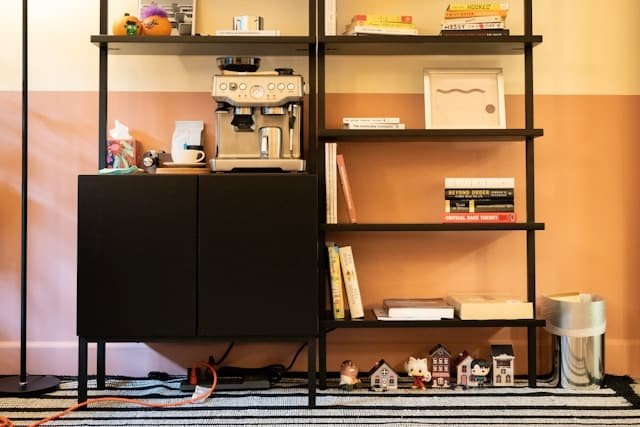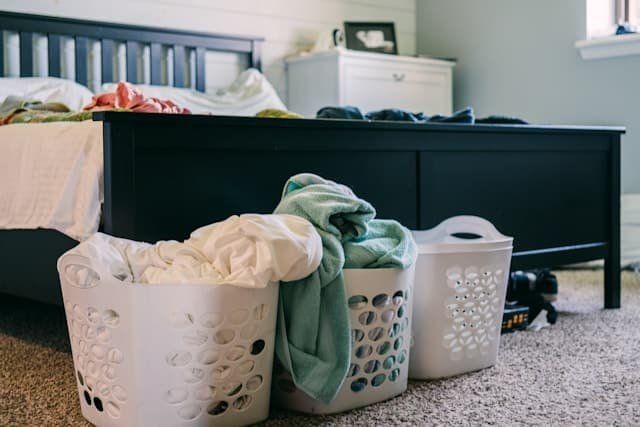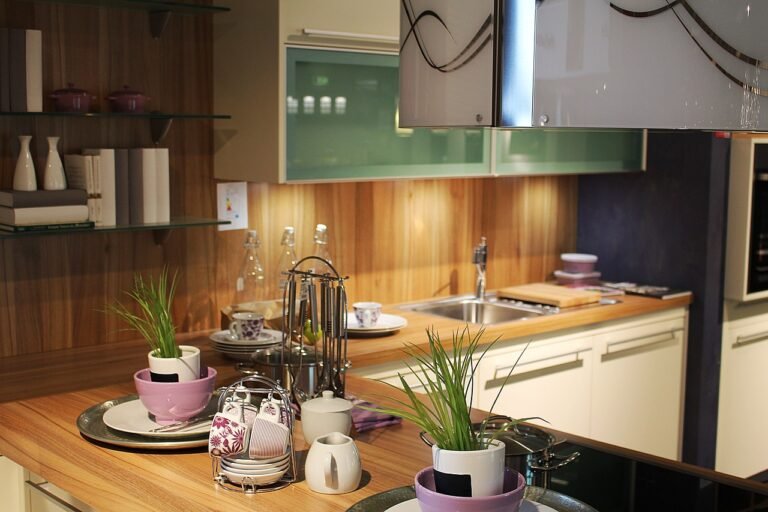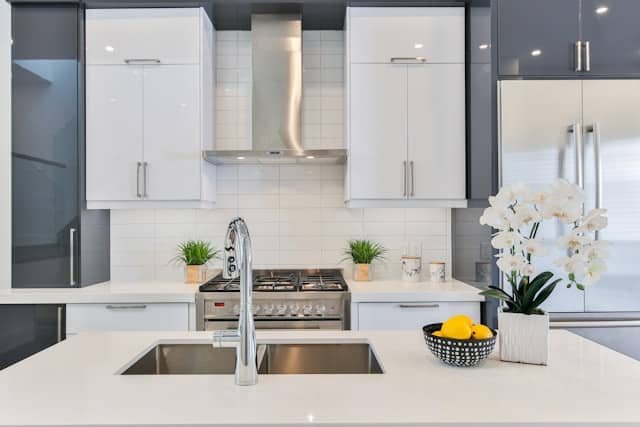Decluttering vs. Maintenance: Why Most People Fail at the Second One and Never Achieve a Clutter Free Home
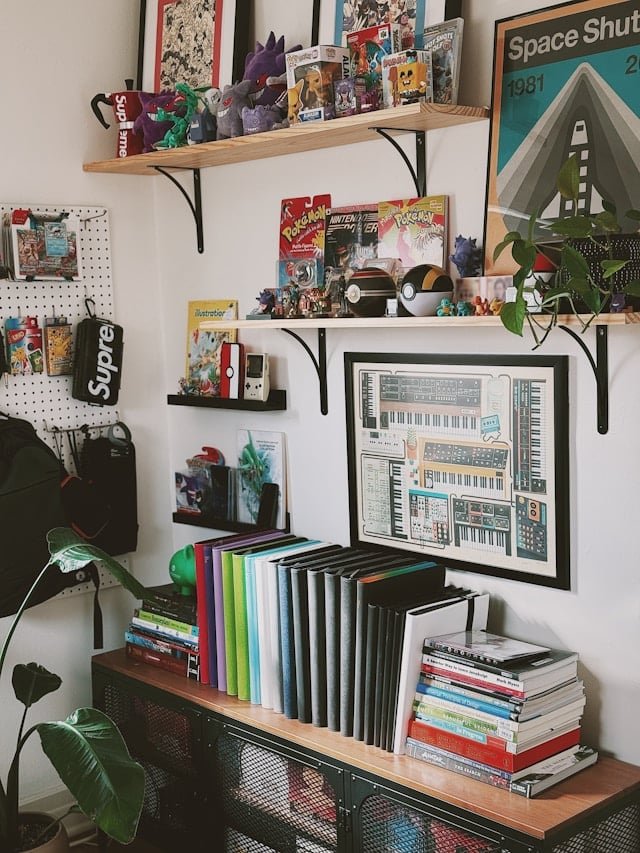
Decluttering feels like a fresh start, but why do so many people revert to chaos shortly after?
Decluttering is the process of removing the extra, the unused, and the unnecessary. It gives you that satisfying sense of control, clarity, and calm. You see instant results, and it feels like you’ve turned a corner.

But the real challenge begins after the mess is gone.
That’s where maintenance comes in! The quiet, ongoing effort to keep your space in order. And for most people, this is where things fall apart.
It’s not as exciting, it doesn’t feel urgent, and it often gets overlooked until the clutter slowly creeps back in.
In this post, we’re breaking down why maintenance is so much harder than decluttering and what you can do to make it easier.
The Psychology Behind Decluttering vs. Maintenance
Decluttering is deeply satisfying because it gives you immediate results. You can see the difference right away!
A cleared countertop, an organized drawer, a trash bag full of things you no longer need!
That sense of accomplishment triggers a dopamine rush, making you feel productive, in control, and energized. It’s no surprise so many people enjoy decluttering; it feels good.
Maintenance, on the other hand, is a different story. It’s not about quick wins; it’s about staying consistent. There’s no dramatic before-and-after moment, no big emotional payoff.
It’s the quiet habit of putting things back, tidying up little by little, and keeping clutter from building up again. Maintenance relies on discipline, not motivation and that’s why it’s harder to stick with.
While decluttering gives you a short-term boost, maintenance is what creates long-term change. The challenge is learning to value those small, everyday efforts just as much.
Why Most People Fail at Maintenance and Never Achieve A Clutter Free Home (And the Fixes)
Here are the reasons why most people fail at maintenance after decluttering:
1. They See It as a One-Time Task, Not a Habit
Decluttering feels like crossing something off a to-do list and that’s exactly where the problem begins.
Many people treat it like a single project, clear the mess, enjoy the result, and move on.
But staying organized doesn’t work that way. Without turning organization into a regular habit, the clutter slowly creeps back in.
Shift your mindset from “done” to “ongoing.”
Instead of waiting for clutter to build up again, build small routines into your day. A nightly 10-minute reset, a weekly surface sweep, or a quick monthly declutter session can help you stay in control without letting things spiral.
Treat maintenance like brushing your teeth, it’s not exciting, but it’s necessary to stay clean and clear.
2. No Systems in Place
Decluttering clears out the excess, but without systems, it’s just a temporary fix.
When items don’t have a clear, designated home, they end up scattered on countertops, in random drawers, or dumped in the nearest empty spot.
Over time, this disorganization builds back up, and you’re right back where you started. Maintenance becomes frustrating because there’s no structure to support it.
Create simple systems that make it easy to stay organized. Group similar items together, assign them a specific space, and use containers or labels to reinforce the system.
3. Emotional Fatigue and Decision Burnout
Decluttering can be mentally exhausting. You’re faced with hundreds of small decisions like what to keep, toss, donate, or relocate and that constant decision-making takes a toll.
After a really big decluttering session, people often feel drained, and without realizing it, they begin avoiding the small daily decisions needed to maintain order.
This leads to clutter creeping back in, simply because your brain is tired of making choices.
Don’t push yourself to declutter the entire house in one go.
Instead, take it slow. Break things down into categories like books, toys, pantry items, or bathroom products and tackle just one at a time.
Small, focused sessions prevent burnout and give you time to create a system before moving on. This gradual approach builds better habits and makes maintenance feel much more manageable.
4. Lack of Visual Reminders or Cues
“Out of sight, out of mind.” That’s one of the biggest reasons maintenance fails. Once the initial decluttering is done, most people tuck everything away so neatly that they forget to stay on top of it.
Without visual cues there’s no gentle nudge to keep up with the process. You forget to return things to their place or hold onto broken or unused items longer than necessary.
Build subtle but effective visual systems into your space.
Keep a donation box in plain sight so whenever you come across something you no longer need, you can drop it in right away.
A repair box near your workspace or in a utility closet can remind you to actually fix or repurpose items rather than letting them pile up.
These visual cues take the pressure off your memory and make maintenance effortless and ongoing.
5. Too Much Stuff is Still Hanging Around
Decluttering often focuses on the most obvious clutter things that are broken, expired, or clearly unwanted. But many people stop there and still hold onto far more than they realistically use or have space for.
Maybe it’s “just in case” items, sentimental pieces, or multiples of the same thing.
So, even after decluttering, the volume of stuff remains too high to manage comfortably. Drawers are still full, shelves still feel crowded, and everyday maintenance becomes a struggle.
Be honest about what you actually use, love, and have room for. Go beyond surface-level decluttering and question why you’re keeping each item.
Does it serve a purpose?
Do you truly have space for it?
The goal isn’t always minimalism but it’s manageability.
When your home only contains what you can easily care for, maintaining it becomes simpler, faster, and much less stressful.
6. It’s Not Built into Their Lifestyle or Schedule
Organization doesn’t stick unless it fits into the rhythm of your life. Many people declutter with the best intentions, but then never carve out time to keep things in order.
Without regular touchpoints like a quick tidy-up before bed or a weekend reset, it’s easy to let things slide. Life gets busy, and if maintenance isn’t part of your daily or weekly flow, it simply doesn’t happen.
Build maintenance into your existing routines.
Pair it with things you already do like tidying the living room during your favorite podcast or resetting the kitchen after dinner.
You can also assign specific zones to specific days. For example, Monday: entryway; Friday: fridge check. It doesn’t need to be intense; just consistent.
Do a short decluttering session once in a week or a month so the clutter stays under control.
7. Mistaking Maintenance for Perfection
A common reason people give up on maintenance is expecting things to always look flawless.
The moment a drawer gets messy or a surface collects clutter, they feel like they’ve failed. But maintenance isn’t about keeping your home in perfect shape 24/7; it’s more about making small, consistent adjustments to keep things from spiraling out of control.
Life is messy, and organization has to be flexible.
Shift your perspective. Expect things to get a little messy and see maintenance as the gentle reset that brings things back in line.
When you let go of perfection, maintenance becomes less stressful and a lot more sustainable.
Final Thoughts:
Decluttering gives you that fresh-start feeling, but it’s maintenance that keeps your home feeling calm and manageable in the long run.
The truth is, most people don’t fail because they can’t declutter. They struggle because they never learned how to stay decluttered. And that’s okay.
Maintenance doesn’t have to be hard. With the right systems, a few daily habits, and a mindset shift away from perfection, you can create a home that stays organized without constant effort.

